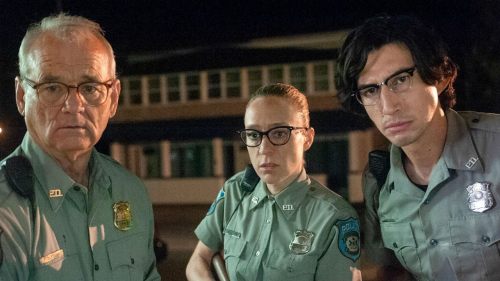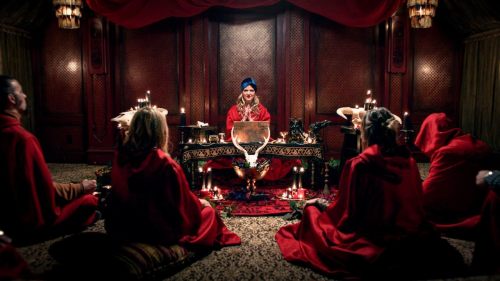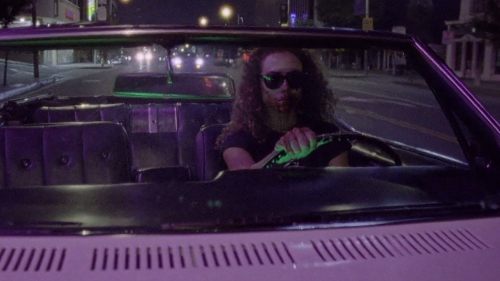Overlook Film Festival Review: THE VAST OF NIGHT
If Steven Spielberg ever gets ahold of The Vast of the Night and decides to produce the follow-up film for director Andrew Patterson – whatever it might be - the world has a chance of being introduced to an almighty weapon heretofore unseen by mankind: pure, weaponized nostalgia. Are we ready for such an awesome assault? Who knows, but I bet we’ll all have a big ol’ grin on our faces as they melt from wistful remembering.
Patterson’s film, a wonderful homage to the awe-inclined world of ‘50s science fiction, is a pitch-perfect spiritual successor to Spielberg’s Close Encounters of the Third Kind made on what I have to assume is a minuscule budget. What it lacks in big-name actors or explosions, though, it more than makes up for with a fantastic capture of the past, when the possibilities of science fiction inspired wonder in audiences.
Poodle skirts, Buddy Holly glasses and phone switchboards let you know you’re watching a movie set in the past but anybody who’s traveled through the small towns of Southwest America knows The Vast of Night is only a “gee wiz” away from current reality for some of our fellow Americans. But instead of focusing on the Trump-based nostalgia for when America was white (nevermind the fact that the cast of The Vast of Night is pretty dang white), the movie brings a focus on America’s sadly weakened fascination with the possibilities of science. The characters in The Vast of Night speak breathlessly about what wonders the future holds – and this is a sentimentality that I can get behind.
In an interview surrounding the release of The Player, Robert Altman talked about how he crammed as much overlapping dialogue into the first few minutes of his movie as he could as a way to inform audiences that paying attention to his film was not optional. Right away, audiences knew that they had to give their full attention to the movie or risk being lost for good. Patterson, along with writers James Montague and Craig W. Sanger, begins The Vast of the Night in much the same way, with a great series of tracking shots that follow Jake Horowitz as Everett, the local radio host for a tiny New Mexico town in the ‘50s, as he arrives at a high school basketball game to assist with a technical problem, meeting most of the film’s characters along the way. Wonderful, snappy dialogue does more to establish the characters we’ll be following than any amount of exposition or forced backstory. During this extended prologue, Everett meets up with Fay, a tenacious young switchboard operator who has bought a new tape recorder. Played by Sierra McCormick, Fay is a wonderful character plucked straight from pulp fiction. The two are so damn charming together it hurts – I could watch a whole series of movies starring the two characters as they investigate mysteries. They feel plucked from the kid detective mysteries that used to be so commonplace in fiction sixty years ago.
Curious beyond reason, it’s Fay who discovers a mysterious sound over the radio and phone lines and enlists Everett to get to the bottom of it. From there, the two are quickly embroiled in a mystery surrounding UFOs, military cover-ups and a lonely old woman who lives out on the corner of town and may hold the answers to everything.
Patterson, by focusing on character work over spectacle, has created a movie that plays out much like a radio play. Long stretches of the film are grounded in conversations between characters. In fact, during a few moments in the film the screen actually goes black – forcing the audiences to focus in on the words being spoken. As easy as it is to imagine The Vast of the Night being presented as a radio play, Patterson actually leans heavily into his biggest influence via a framing device that presents the film audiences are watching as an episode of a television show not unlike The Outer Limits or The Twilight Zone. During the course of the film, the camera transitions between scenes by occasionally pulling back to show the film’s action in black and white on a tiny tube television in some ‘50s suburbanite household.
It’s this combination of a wonderful script and a fun visual hook that gives The Vast of Night its identity. It’s heightened nostalgia – not unlike The Iron Giant or Back to the Future – but done in such a fun way that the movie never feels forced or cynical.
The real MVP behind The Vast of Night, though, is its outstanding camerawork. I don’t know if they used drones, dollies or just strapped a camera on a motorbike but there are some extended tracking shots that are simply amazing, establishing the geography of the film and the isolated nature of the film’s protagonists in a breathtaking way. There’s no getting around it – The Vast of Night looks better than any film of its budget has a right to.
Great aesthetic, great script, great handle on homages? What more can you ask for when it comes to a ‘50s set Americana science fiction film about visitors from another planet? The Vast of Night has got the goods – now let’s hope it finds the audience to match.



